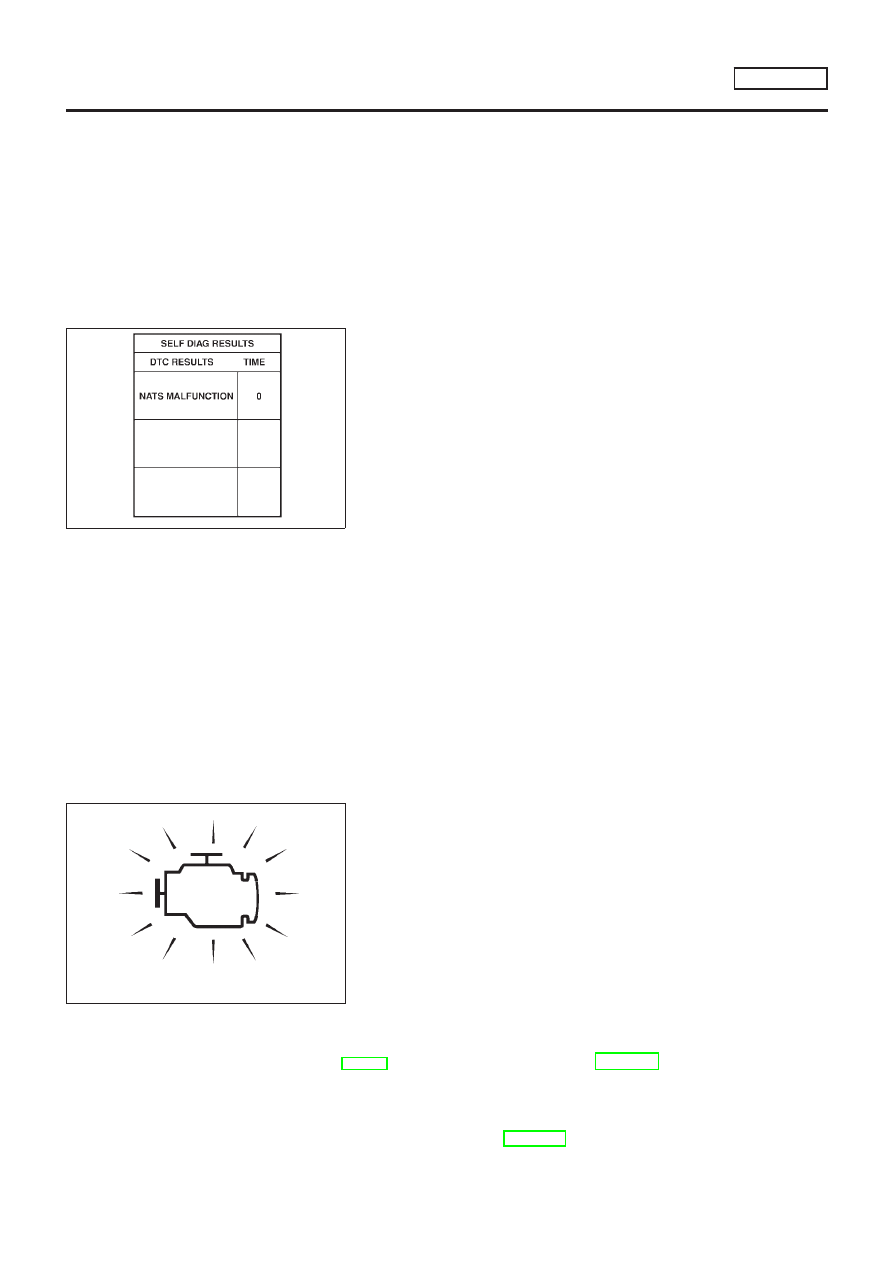Nissan Almera Tino V10 (2001 year). Manual - part 96

+
Erasing the emission-related diagnostic information using CONSULT-II is easier and quicker than
switching the diagnostic test mode using the data link connector.
SEF252Z
NATS (Nissan Anti-Theft System)
NLEC1265
+
If the security indicator lights up with the ignition switch
in the “ON” position or “NATS MALFUNCTION” is dis-
played on “SELF-DIAG RESULTS” screen, perform self-
diagnostic results mode with CONSULT-II using NATS pro-
gram card. Refer to “NATS (Nissan Anti-Theft System)” in
EL section.
+
Confirm no self-diagnostic results of NATS is displayed
before touching “ERASE” in “SELF-DIAG RESULTS”
mode with CONSULT-II.
+
When replacing ECM, initialization of NATS system and
registration of all NATS ignition key IDs must be carried
out with CONSULT-II using NATS program card.
Therefore, be sure to receive all keys from vehicle owner.
Regarding the procedures of NATS initialization and NATS
ignition key ID registration, refer to CONSULT-II operation
manual, NATS.
Malfunction Indicator (MI)
DESCRIPTION
NLEC0628
SAT652J
The MI is located on the instrument panel.
1. The MI will light up when the ignition switch is turned ON without the engine running. This is a bulb check.
+
If the MI does not light up, refer to EL-10, “WARNING LAMPS” or see EC-1303.
2. When the engine is started, the MI should go off.
If the MI remains on, the on board diagnostic system has detected an engine system malfunction.
If MI illuminates or blinks irregularly after starting engine, water may have accumulated in fuel filter.
Drain water from fuel filter. Refer to “WATER DRAINING”, EC-1094.
ON BOARD DIAGNOSTIC SYSTEM DESCRIPTION
YD22DDTI
NATS (Nissan Anti-Theft System)
EC-1097